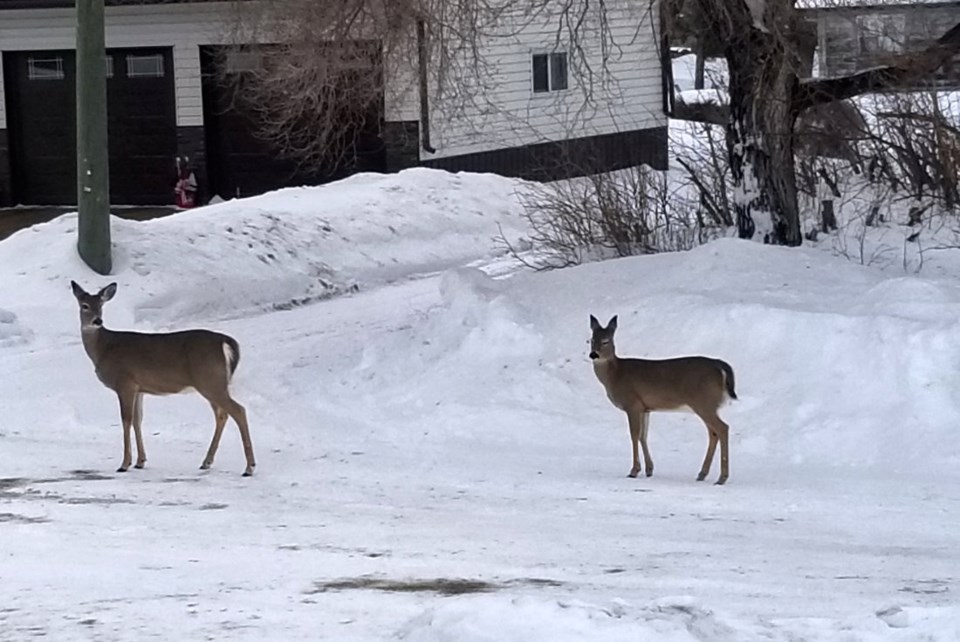Deer were found dead by the dozens around the quiet community of Hamiota last winter, and had to be hauled away from town. It was a harsh winter, but there’s more to it than that.
Although well-intentioned, feeding deer can actually endanger their health and survival. There are many reasons why Manitoba Sustainable Development does not recommend feeding deer.
HUMAN SAFETY AND PROPERTY DAMAGE
• Wild animals are dangerous. By feeding wild animals, you may be conditioning them to expect food from people. Deer that lose their natural tendency to avoid people can become a significant threat.
• Deer can attract predators such as coyotes and wolves. This would increase safety concerns and risk to people and pets.
• When deer are attracted to homes or farms, the risk for vehicle collisions increases. This can result in numerous deer fatalities, expensive vehicle repairs and human injury.
• Deer attracted to artificial or supplemental food sources will also feed on neighbours’ perennial flowers (actually digging up perennials like lilies), trees and shrubs - particularly cedar trees.
DEER HEALTH AND SAFETY
• A deer’s digestive system changes slowly with the seasons. In winter, their system adapts to allow them to digest relatively low-quality food like twigs, buds and stems. In fact, ruminants produce more heat to stay warm when they have roughage in their stomache.
• Rapid or dramatic changes to this winter diet can lead to bloating, diarrhea, enteritis and in some cases, death.
• Deer have starved to death with full stomachs in winter because they could not digest high carbohydrate foods like hay, grains, corn and alfalfa.
• Deer will travel long distances to reach an artificial food source - they like this food just like kids like ice cream. This may increase exposure to predators and other hazards (ex: increased risk of vehicle collision with more frequent highway crossings).
OVERABUNDANCE
• Natural processes limit deer populations to a level where they live in balance with their habitat. Winter mortality is normal in Manitoba. This natural mortality varies from year to year, but helps ensure the deer population stays at, or below, what the habitat can support.
DISEASE TRANSMISSION
• Deer gathered at artificial food sources have a higher risk of transmitting diseases such as bovine tuberculosis, chronic wasting disease, brucellosis and parasites to one another.
So, while it’s a beautiful sight to see a doe and her yearlings strolling the street at dusk, it’s also a bad sign. These same deer become habituated and continue to graze garden produce in the summer. Lettuce and pansies don’t last long when the deer family passes through the yard. They will even dig up carrots.




